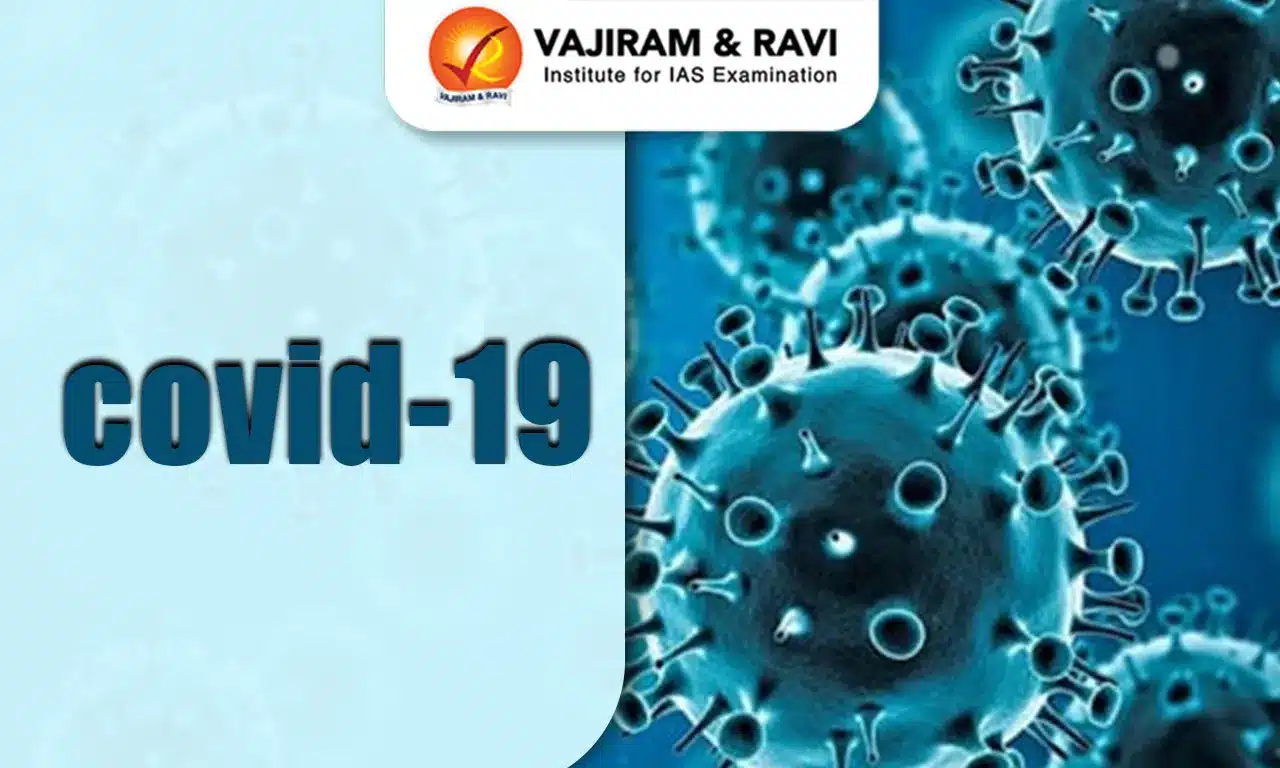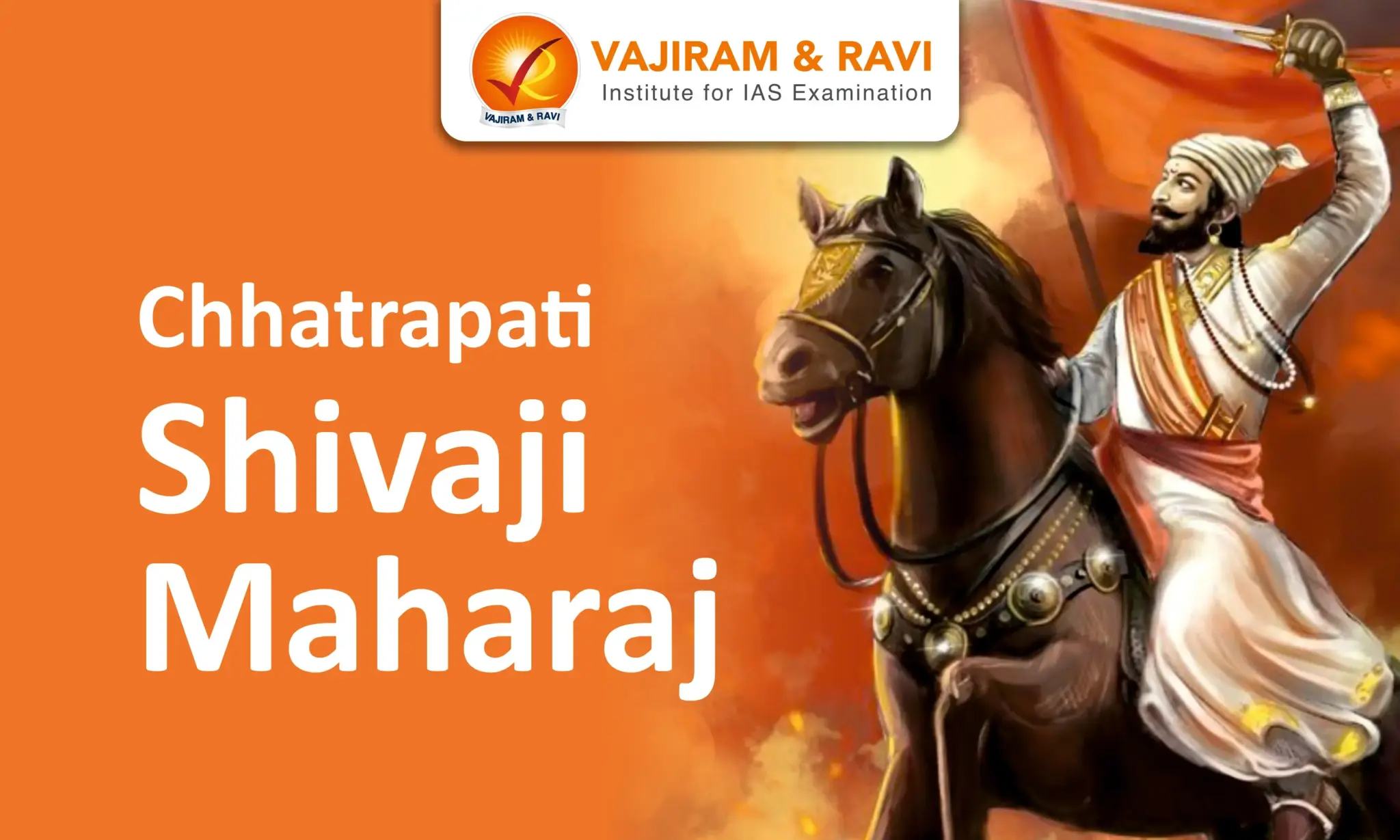COVID-19, the disease caused by the novel coronavirus SARS-CoV-2, emerged in Wuhan, China, in late 2019. It rapidly escalated into a global pandemic, leading to unprecedented public health interventions. The crisis spurred a race for vaccines, yielding several effective options by the end of 2020. The pandemic has had far-reaching consequences, straining healthcare systems, disrupting economies, and altering daily life worldwide.
It is characterised by fever, cough, and breathing difficulties; it can lead to severe respiratory illness, particularly in vulnerable populations, even causing death. Efforts to contain its spread included lockdowns, mask mandates, and travel restrictions.
Background of COVID 19
COVID-19 is a zoonotic disease that transfers from animals to humans, often through direct contact, vectors, or contaminated food and poses significant challenges to public health and even wildlife conservation.
Origin of Corona Virus
The beginnings of SARS-CoV-2 have sparked considerable discussion. Several theories have been put forward regarding the virus's introduction and subsequent adaptation to humans.
- Direct Zoonotic Transmission: Natural Origins
- Direct spillover: This is the primary route by which scientists believe SARS-CoV-2 was transmitted to humans, likely from bats.
- Possible transmission route: It possibly passed through pangolins and then to humans, although this sequence is not yet confirmed.
- Epicentre at Wuhan Market: The Huanan Seafood Wholesale Market in Wuhan is thought to be the place where the virus initially spread to humans.
- Intermediate Host: Cross-Species Transmission
- Secondary pathway: Scientists posit a possible intermediate animal host that carried the virus to humans.
- Laboratory Incident: Controversy and Conspiracies
- Lab leak theory: There are contentious claims that SARS-CoV-2 originated from a lab, particularly the Wuhan Institute of Virology.
- Mojiang Mine Incident: A Potential Clue
- 2012 illness: Miners cleaning bat faeces became sick, leading to investigations for novel diseases.
- RaTG13 discovery: The closest known relative of SARS-CoV-2 until 2022 was found in a bat sample from this mine.
About Corona Virus
SARS-CoV-2 is part of a broad category of viruses known as coronaviruses (CoVs). This extensive virus family is responsible for various respiratory illnesses in humans, ranging from the ubiquitous common cold to more uncommon and severe conditions like Severe Acute Respiratory Syndrome (SARS) and Middle East Respiratory Syndrome (MERS). The structure of Coronavirus includes:
- Spike proteins: These crown-like spikes on their surface are key to how they infect cells. They enable the virus to attach to and enter host cells.
- Envelope: This lipid bilayer envelope encases the viral components, helping in entry and release from host cells.
- Nucleocapsid: Inside the envelope, the nucleocapsid contains the virus's genetic material (RNA) and is involved in viral replication.
- Membrane protein: This helps in the formation of the virus's envelope and plays a role in the virus's lifecycle.
Structure of Corona Virus
- General description: SARS-CoV-2 is identified as a betacoronavirus.
- It is an enveloped virus with a single-stranded RNA genome that is positive-sense (meaning its RNA can be directly translated into proteins by the host cell's ribosomes without going through reverse transcription), originating from zoonotic sources.
- The virus particles are spherical to pleomorphic, with sizes ranging from 80 to 160 nm.
- Structural proteins: It is composed of four main structural proteins: the envelope (E), spike (S), membrane (M), and nucleocapsid (N) proteins.
- The envelope is formed by the S, M, and E proteins.
- The M protein, being the most plentiful, primarily determines the shape of the envelope.
- The E protein is noted as the smallest of the structural proteins.
- Envelope and assembly: The S and M proteins, which extend across the membrane, play pivotal roles in the virus's assembly process during replication.
- Nucleocapsid and functionality:
- The N protein binds to the viral RNA to form the nucleocapsid within the envelope.
- Besides its key role in managing the viral genome, the N protein is also essential for the replication cycle of the virus, including assembly and budding, and it influences the host's cellular response to infection.
- Crown-like appearance: S proteins polymerise and remain embedded in the envelope, creating a crown-like appearance, hence the name "coronavirus."
- Spike Glycoprotein Function: The spike protein specifically targets the ACE2 receptor (These are also found in intestinal epithelial cells of the gut, endothelial and smooth cells of the blood vessels, heart) found in human respiratory tract cells.
- It possesses a compact ridge, enhancing its binding affinity to the ACE2 receptor, stronger than that of similar viruses.
- Once bound to the receptor, the virus fuses its envelope with the cell membrane, allowing the viral RNA to enter the host cell.
- Mutation Rate: SARS-CoV-2, like other RNA viruses, has a higher mutation rate than DNA viruses. This can lead to the emergence of new variants over time.
Key aspect of the Virus
- Reproduction Number
- Basic (RO): It represents the average number of people to whom a single infected person will transmit the virus in a fully susceptible population without any specific interventions. For SARS-COV-2, it is between 2-3 initially.
- Effective (Rt): The Rt reflects the reproduction rate of the virus at any given time in the population, taking into account measures such as social distancing, mask-wearing, etc.
- An Rt above 1 indicates that the virus is spreading in a community, while an Rt below 1 suggests that the spread is slowing down.
- Clinical Onset Interval: It is the time between the onset of symptoms in successive cases in a chain of transmission. In most studies, the average time is between 4 and 5 days.
Testing
There are two types of tests regarding COVID-19.
- Diagnostic Tests: Diagnostic tests are used to determine whether a person is currently infected with SARS-CoV-2. These tests come in two varieties.
- Molecular tests (RT-qPCR): Identifying viral genetic material, primarily using nasal or throat swabs, sometimes saliva; considered highly accurate.
- Antigen tests: Detecting virus-specific proteins, performed with nasal or throat swabs; known for quick results, often within an hour.
- Antibody Tests:
- Antibody tests (Serological): Detecting antibodies which are the immune system's response to the virus; requires a blood sample, typically from a finger stick.
- Timing of antibody development: Antibodies usually develop several weeks post-infection and might linger for weeks after recovery, making these tests unsuitable for current infection diagnosis.
Symptoms of COVID-19
The symptoms of COVID-19 can vary widely among individuals. The most common symptoms include:
- Common Symptoms:
- Cough
- Fever or chills
- Shortness of breath or difficulty breathing
- Muscle or body aches
- Sore throat
- A new loss of taste or smell
- Diarrhoea
- Headache
- New fatigue
- Nausea or vomiting
- Congestion or runny nose
Causes of COVID-19 and other Zoonotic diseases
The COVID-19 virus is believed to have a zoonotic origin, meaning it jumped from animals to humans. There are multiple reasons which might have given birth to the COVID-19 pandemic:
- Deforestation and habitat destruction: Encroachment into wildlife habitats to bring humans into closer contact with wildlife, increasing the likelihood of disease spillover.
- Wildlife trade: The capture and trade of wild animals, both legal and illegal, provide opportunities for viruses to jump species.
- Fooding habits: Consuming exotic species like bats, civets, and rapid changes in food habits increase the likelihood of entry of novel pathogens like viruses into our food chain.
- Changing weather patterns: Climate change can alter the distribution of wildlife, pests, and vectors, leading to new interactions and transmission opportunities.
- Biotechnology risks: While rare, there's a potential risk of accidental release of pathogens from research facilities.
- Antimicrobial resistance: Overuse and misuse of antibiotics in humans and animals can lead to resistant strains of zoonotic bacteria.
- Insufficient wildlife disease monitoring: Limited monitoring of wildlife health can delay the detection of emerging zoonotic threats.
Transmission of COVID-19
COVID-19 primarily spreads from person to person through respiratory droplets when an infected individual coughs, sneezes, etc. Other factors for transmission include:
- Modes of Transmission:
- Transmission through droplets: When an infected individual coughs or sneezes, they expel respiratory droplets that can be directly breathed in or swallowed by others nearby.
- Transmission via contact: An individual may contract the virus by touching surfaces or objects that have viral particles on them and then touching their face, particularly the mouth, nose, or eyes.
- Aerosol transmission: Infection may occur when exhaled respiratory droplets from an infected person become aerosolised in the air and are then inhaled deeply into the lungs of others, especially in confined spaces.
- Causes of the spread:
- Asymptomatic transmission: Individuals infected with SARS-CoV-2 can transmit the virus even if they do not show symptoms, making it difficult to control the spread.
- Delayed symptom onset: People may become contagious 1-2 days before they start to show symptoms, which can lead to unintentional spreading.
- Community transmission: In many areas, COVID-19 has spread so widely that individuals may not know where or how they became infected, indicating community transmission.
- International travel: Global travel has facilitated the rapid spread of the virus across countries and continents.
- Crowded settings: High-density living conditions, mass gatherings, and public events have contributed to rapid transmission rates.
Treatment of Covid-19
Treatment for COVID-19 involves a combination of measures, ranging from self-care and supportive therapies to antiviral medication and hospital care for more severe cases. A few measures are:
- Antiviral and other medications:
- Antivirals: Medications like Remdesivir have been authorised for treating COVID-19 in hospitalised patients.
- Corticosteroids: Dexamethasone is used for severely ill patients to reduce inflammation.
- Monoclonal antibodies: These are laboratory-produced molecules engineered to serve as substitute antibodies that can restore, enhance, or mimic the immune system's attack on cells.
- Bamlanivimab and Etesevimab: Administered together for mild to moderate COVID-19 in high-risk patients.
- Casirivimab and Imdevimab: Similar to Bamlanivimab and Etesevimab in use and function.
- Hospital Care:
- Oxygen therapy: To maintain oxygen saturation for patients with respiratory distress.
- Ventilator support: For patients who are unable to breathe on their own.
- ICU care: Intensive care monitoring and support for the most critical patients.
- Vaccination: They are designed to train the immune system to recognize and combat the virus. Several types of vaccines were developed such as mRNA vaccine, viral vector vaccine, and Inactivated virus vaccine.
- Preventative measure: While not a treatment, vaccines are crucial in preventing COVID-19 or reducing the severity of the illness.
Current Trends
With the global vaccination drive, the intensity of COVID-19 is declining, which is visible in present trends.
Global
- Change of status: WHO has categorised COVID-19 as an ongoing health issue than the previously held public health emergency of international concern (PHEIC).
- Vaccination achievement: Over 5.55 billion people have been successfully vaccinated.
India
- Positive decline: There is a decline in active cases as per the Ministry of Health and Family Welfare the active cases in India are below 1000.
- Billion-plus achievement: India has successfully crossed the 200 crore mark in its vaccination drive.
India’s Strategy against COVID-19
India implemented a range of measures to control the COVID-19 pandemic. These measures evolved as the pandemic progressed and as more was learned about the virus. These include :
- Nationwide Lockdowns:
- Initial strict lockdown: India implemented one of the world's strictest lockdowns, which lasted for several weeks, to prevent the rapid spread of the virus.
- Vaccination Drives:
- Massive Vaccination Campaign: Launch of one of the largest vaccination drives globally, using vaccines like Covishield (AstraZeneca) and Covaxin (Bharat Biotech).
- Vaccine maitri: A diplomatic initiative to supply COVID-19 vaccines to neighbouring countries.
- Healthcare Infrastructure Expansion:
- COVID-19 hospitals: Establishment of dedicated COVID-19 hospitals and care centres to treat infected patients.
- Oxygen supply enhancement: Addressing the oxygen crisis by ramping up production and distribution during the second wave in 2021.
- Testing and contact tracing:
- Increased testing facilities: Expansion of RT-PCR test facilities across the country.
- Aarogya Setu app: Development of a contact-tracing app to identify potential exposures and hotspots.
- Economic Support Measures:
- Financial packages: Announced economic stimulus packages to support businesses and the poor.
- Food rationing system: Free food grains to the poor under the Pradhan Mantri Garib Kalyan Yojana.
- Public Health measures:
- Mask mandates: Enforcement of mask-wearing in public places.
- Sanitization drives: Regular sanitization of public areas, especially in urban centres.
- Information and Communication:
- Public awareness campaigns: Widespread campaigns to educate the public about the virus, vaccination, and health practices.
- MyGov: Utilising online platforms for information dissemination and public feedback.
- Rural Healthcare Initiatives:
- ASHA workers: Utilisation of Accredited Social Health Activists (ASHA) for rural outreach and surveillance.
- Mobile health units: Deploying mobile health units to provide testing and healthcare services in remote areas.
Global Best Practices
Examples of good global best practices include the following:
| Best Practice | Description | Country | Outcomes |
| Mass Vaccination Campaigns | Launching comprehensive vaccination programs to achieve high coverage quickly, including the establishment of mass vaccination centres and mobile units to reach different populations. | Israel |
-High vaccination rates contributed to a significant decrease in cases and mortality rates. - Early data allowed for valuable real-world vaccine efficacy studies. |
| Effective Use of Digital Contact Tracing | Implementing digital tools and apps to identify and notify individuals who may have been exposed to COVID-19, thereby enabling quicker isolation and testing. | South Korea |
-Contact tracing aid in controlling outbreaks without full lockdowns. - Privacy-preserving approaches maintain public trust. - Allowed for efficient containment of emerging clusters. |
Last updated on January, 2026
→ Check out the latest UPSC Syllabus 2026 here.
→ Join Vajiram & Ravi’s Interview Guidance Programme for expert help to crack your final UPSC stage.
→ UPSC Mains Result 2025 is now out.
→ UPSC Notification 2026 is scheduled to be released on January 14, 2026.
→ UPSC Calendar 2026 is released on 15th May, 2025.
→ UPSC Prelims 2026 will be conducted on 24th May, 2026 & UPSC Mains 2026 will be conducted on 21st August 2026.
→ The UPSC Selection Process is of 3 stages-Prelims, Mains and Interview.
→ UPSC Result 2024 is released with latest UPSC Marksheet 2024. Check Now!
→ UPSC Toppers List 2024 is released now. Shakti Dubey is UPSC AIR 1 2024 Topper.
→ Also check Best IAS Coaching in Delhi
Covid-19 FAQs
Q1. What is COVID-19 and what causes it?+
Q2. How does COVID-19 spread?+
Q3. What are the symptoms of COVID-19?+
Q4. How long does immunity last after getting COVID-19?+
Q5. What are the long-term health issues associated with Covid-19?+
Tags: covid-19 symptoms quest

















